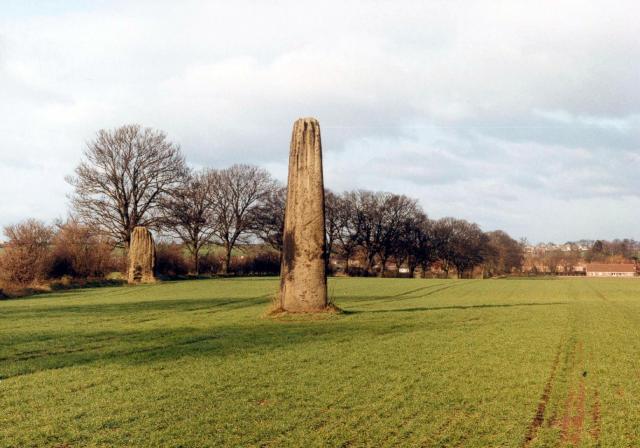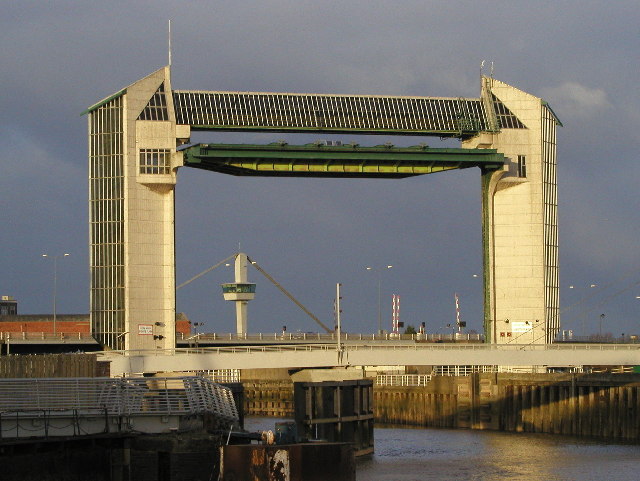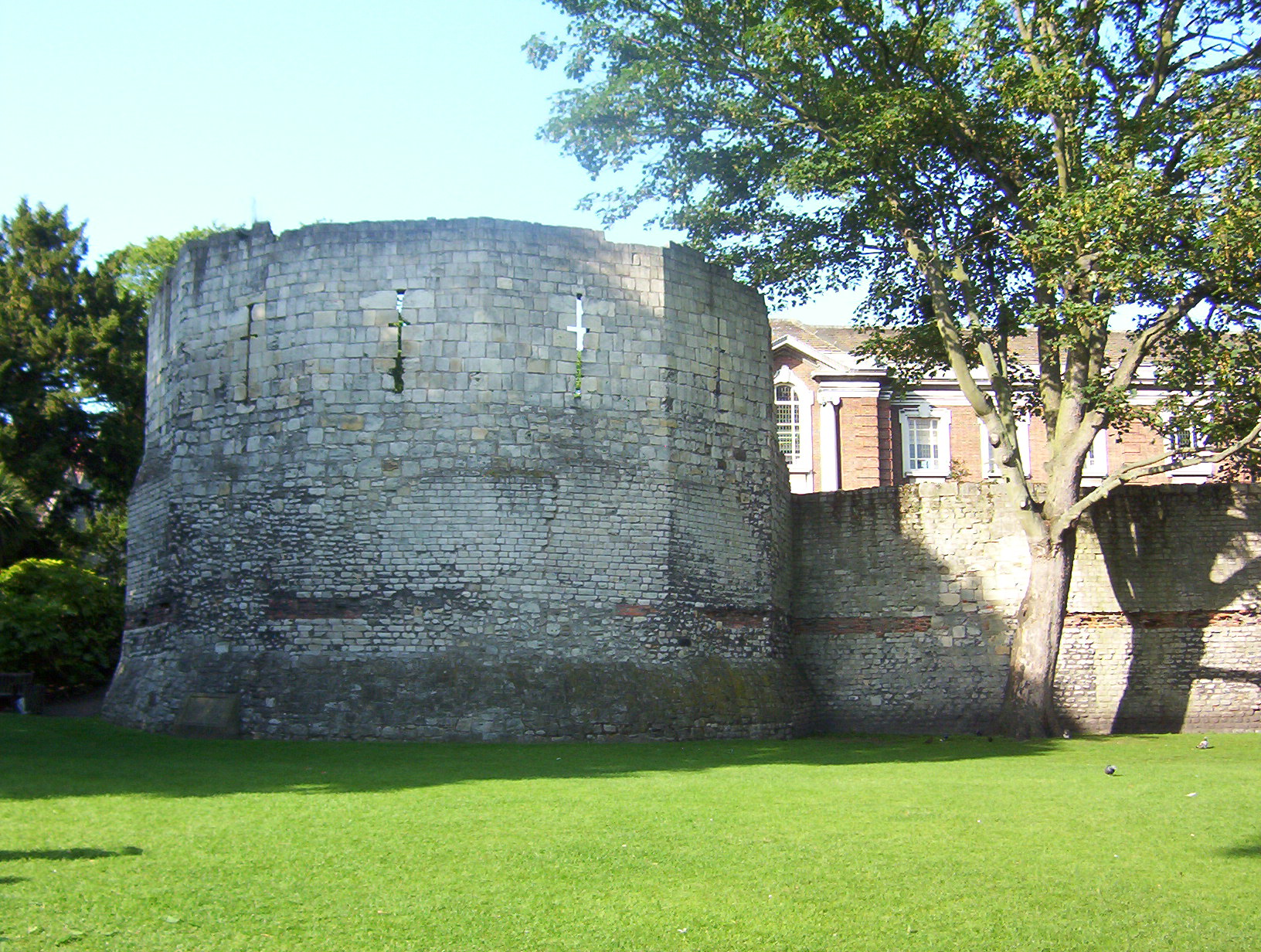|
Aire And Calder Canal
The Aire and Calder Navigation is the canalised section of the Rivers Aire and Calder in West Yorkshire, England. The first improvements to the rivers above Knottingley were completed in 1704 when the Aire was made navigable to Leeds and the Calder to Wakefield, by the construction of 16 locks. Lock sizes were increased several times, as was the depth of water, to enable larger boats to use the system. The Aire below Haddlesey was bypassed by the opening of the Selby Canal in 1778. A canal from Knottingley to the new docks and new town at Goole provided a much shorter route to the River Ouse from 1826. The New Junction Canal was constructed in 1905, to link the system to the River Don Navigation, by then part of the Sheffield and South Yorkshire Navigation. Steam tugs were introduced in 1831. In the 1860s, compartment boats were introduced, later called Tom Puddings, from which coal was unloaded into ships by large hydraulic hoists. This system enabled the canal to carry a ... [...More Info...] [...Related Items...] OR: [Wikipedia] [Google] [Baidu] |
Canal And River Trust
The Canal & River Trust (CRT), branded as in Wales, holds the guardianship of 2,000 miles of canals and rivers, together with reservoirs and a wide range of heritage buildings and structures, in England and Wales. Launched on 12 July 2012, the Trust took over the responsibilities of the state-owned British Waterways in those two places. History The concept of a National Waterways Conservancy was first championed and articulated in the 1960s by Robert Aickman, the co-founder of the Inland Waterways Association, as a way to secure the future of Britain's threatened inland waterways network. The idea was revived by the management of British Waterways in 2008 in response to increasing cuts in grant-in-aid funding, a drop in commercial income after the financial crisis of 2007–2008 and growing calls by waterway users for a greater say in the running of the waterways. On 18 May 2009, launching 'Twenty Twenty – a vision for the future of our canals and rivers' on the terrace of ... [...More Info...] [...Related Items...] OR: [Wikipedia] [Google] [Baidu] |
Selby
Selby is a market town and civil parish in the Selby District of North Yorkshire, England, south of York on the River Ouse, with a population at the 2011 census of 14,731. The town was historically part of the West Riding of Yorkshire until 1974. Selby once had a large shipbuilding industry, and was an important port on the Selby Canal which brought trade from Leeds. History The town's origins date from the establishment of a Viking settlement on the banks of the River Ouse. Archaeological investigations in Selby have revealed extensive remains, including waterlogged deposits in the core of the town dating from the Roman period onwards. It is believed that Selby originated as a settlement called Seletun which was referred to in the Anglo-Saxon Chronicle of AD 779. The place-name 'Selby' is first attested in a Yorkshire charter , where it appears as ''Seleby''. It appears as ''Selbi'' . The name is thought to be a Scandinavian form of Seletun, meaning ' sallow tree settlem ... [...More Info...] [...Related Items...] OR: [Wikipedia] [Google] [Baidu] |
Ripon
Ripon () is a cathedral city in the Borough of Harrogate, North Yorkshire, England. The city is located at the confluence of two tributaries of the River Ure, the Laver and Skell. Historically part of the West Riding of Yorkshire, the city is noted for its main feature, Ripon Cathedral, which is architecturally significant, as well as the Ripon Racecourse and other features such as its market. The city was originally known as ''Inhrypum''. Bede records that Alhfrith, king of the Southern Northumbrian kingdom of Deira, gave land at Ripon to Eata of Hexham to build a monastery and the abbot transferred some of his monks there, including a young Saint Cuthbert who was guest-master at Ripon abbey. Both Bede in his Life of Cuthbert and Eddius Stephanus in his Life of Wilfred state that when Eata was subsequently driven out by Alhfrith, the abbey was given to Saint Wilfrid who replaced the timber church with a stone built church. This was during the time of the Anglian kingd ... [...More Info...] [...Related Items...] OR: [Wikipedia] [Google] [Baidu] |
Boroughbridge
Boroughbridge () is a town and civil parish in the Harrogate district of North Yorkshire, England. Historically part of the West Riding of Yorkshire, it is north-west of the county town of York. Until a bypass was built the town lay on the main A1 road from London to Edinburgh, which crosses the River Ure here. The civil parish includes the villages of Aldborough and Minskip. History Toponymy The origin of the name 'Boroughbridge' lies in its location relative to Aldborough, the principal settlement during the Roman period and known as Isurium Brigantum. Dere Street, the Roman road heading north from York, originally crossed the River Ure just north of Aldborough, but at an unknown date the road was diverted to cross the river at Boroughbridge. The place was first mentioned in 1155 in the Latin form ''pontem de Burgo'' and by 1298 in the English form ''Burghbrig'' ('the bridge near Burgh or Aldborough'). A new town grew up at the bridge and the Old Town became known as th ... [...More Info...] [...Related Items...] OR: [Wikipedia] [Google] [Baidu] |
Rochdale Canal
The Rochdale Canal is in Northern England, between Manchester and Sowerby Bridge, part of the connected system of the canals of Great Britain. Its name refers to the town of Rochdale through which it passes. The Rochdale is a broad canal because its locks are wide enough to allow vessels of width. The canal runs for across the Pennines from the Bridgewater Canal at Castlefield Basin in Manchester to join the Calder and Hebble Navigation at Sowerby Bridge in West Yorkshire. As built, the canal had 92 locks. Whilst the traditional lock numbering has been retained on all restored locks, and on the relocated locks, the canal now has 91. Locks 3 and 4 have been replaced with a single deep lock, Tuel Lane Lock, which is numbered 3/4. History The Rochdale Canal was conceived in 1776, when a group of 48 men from Rochdale raised £237 and commissioned James Brindley to conduct a survey of possible routes between Sowerby Bridge and Manchester. Brindley proposed a route simi ... [...More Info...] [...Related Items...] OR: [Wikipedia] [Google] [Baidu] |
Huddersfield Narrow Canal
The Huddersfield Narrow Canal is an inland waterway in northern England. It runs just under from Lock 1E at the rear of the University of Huddersfield campus, near Aspley Basin in Huddersfield, to the junction with the Ashton Canal at Whitelands Basin in Ashton-under-Lyne. It crosses the Pennines by means of 74 locks and the Standedge Tunnel. Building the Canal Planning The canal was first proposed in 1793 at a meeting in the George Hotel, Huddersfield. Its engineer was Benjamin Outram on the recommendation of William Jessop. His plan was to start from the Huddersfield Broad Canal and follow the River Colne with a climb of to its summit where it would pass through a tunnel at Standedge before descending through Saddleworth and the Tame valley to the Ashton Canal near Ashton-under-Lyne. There were many woollen, worsted and cotton mills along its route which promised ample trade. However, there was the possible problem of the loss of their water supplies and so Outram p ... [...More Info...] [...Related Items...] OR: [Wikipedia] [Google] [Baidu] |
Huddersfield Broad Canal
The Huddersfield Broad Canal or Sir John Ramsden's Canal, is a wide-locked navigable canal in West Yorkshire in northern England. The waterway is 3.75 miles (6 km) long and has 9 wide locks. It follows the valley of the River Colne and connects the Calder and Hebble Navigation at Cooper Bridge junction with the Huddersfield Narrow Canal near Aspley Basin in Huddersfield. Construction was authorised in 1774, and the canal opened two years later. It became part of a trans-Pennine route in 1811 when the Huddersfield Narrow Canal joined it at Aspley Basin. Traffic was hampered by the long narrowboats used on the narrow canal that could not use Ramsden's Canal's shorter locks. Goods were transhipped at Aspley Basin, and although shorter narrowboats were built, its success as a trans-Pennine route was overshadowed by the Rochdale Canal which had wide locks throughout and joined the Calder and Hebble Navigation at Sowerby Bridge. The canal passed into railway ownership in ... [...More Info...] [...Related Items...] OR: [Wikipedia] [Google] [Baidu] |
Calder And Hebble Navigation
The Calder and Hebble Navigation is a broad inland waterway, with locks and bridgeholes that are suitable for boats, in West Yorkshire, England. Construction to improve the River Calder and the River Hebble began in 1759, and the initial scheme, which included of new cuts, was completed in 1770 and has remained navigable since it was opened. Significant improvements were made, including the Salterhebble branch to Halifax, opened in 1828, and ever-longer cuts to bypass river sections. Trade was assisted by the opening of the Rochdale Canal in 1804, which provided a through route from Sowerby Bridge to Manchester. There were plans to abandon the river sections completely in the 1830s, but these were modified as the needs of mill owners and other riparian landowners were recognised. With the coming of the railways, the canal was leased to the Manchester and Leeds Railway in 1843, but this was subsequently deemed to be illegal, and the Aire and Calder Navigation with which the ... [...More Info...] [...Related Items...] OR: [Wikipedia] [Google] [Baidu] |
Leeds And Liverpool Canal
The Leeds and Liverpool Canal is a canal in Northern England, linking the cities of Leeds and Liverpool. Over a distance of , crossing the Pennines, and including 91 locks on the main line. The Leeds and Liverpool Canal has several small branches, and in the early 21st century a new link was constructed into the Liverpool docks system. History Background In the mid-18th century the growing towns of Yorkshire, including Leeds, Wakefield and Bradford, were trading increasingly. While the Aire and Calder Navigation improved links to the east for Leeds, links to the west were limited. Bradford merchants wanted to increase the supply of limestone to make lime for mortar and agriculture using coal from Bradford's collieries and to transport textiles to the Port of Liverpool. On the west coast, traders in the busy port of Liverpool wanted a cheap supply of coal for their shipping and manufacturing businesses and to tap the output from the industrial regions of Lancashire. Inspired b ... [...More Info...] [...Related Items...] OR: [Wikipedia] [Google] [Baidu] |
River Trent
The Trent is the third-longest river in the United Kingdom. Its source is in Staffordshire, on the southern edge of Biddulph Moor. It flows through and drains the North Midlands. The river is known for dramatic flooding after storms and spring snowmelt, which in the past often caused the river to change course. The river passes through Stoke-on-Trent, Stone, Rugeley, Burton upon Trent and Nottingham before joining the River Ouse at Trent Falls to form the Humber Estuary, which empties into the North Sea between Hull in Yorkshire and Immingham in Lincolnshire. The wide Humber estuary has often been described as the boundary between the Midlands and the north of England. Name The name "Trent" is possibly from a Romano-British word meaning "strongly flooding". More specifically, the name may be a contraction of two Romano-British words, ''tros'' ("over") and ''hynt'' ("way"). This may indeed indicate a river that is prone to flooding. However, a more likely explanat ... [...More Info...] [...Related Items...] OR: [Wikipedia] [Google] [Baidu] |
Humber
The Humber is a large tidal estuary on the east coast of Northern England. It is formed at Trent Falls, Faxfleet, by the confluence of the tidal rivers Ouse and Trent. From there to the North Sea, it forms part of the boundary between the East Riding of Yorkshire on the north bank and North Lincolnshire on the south bank. Although the Humber is an estuary from the point at which it is formed, many maps show it as the River Humber. Below Trent Falls, the Humber passes the junction with the Market Weighton Canal on the north shore, the confluence of the River Ancholme on the south shore; between North Ferriby and South Ferriby and under the Humber Bridge; between Barton-upon-Humber on the south bank and Kingston upon Hull on the north bank (where the River Hull joins), then meets the North Sea between Cleethorpes on the Lincolnshire side and the long and thin headland of Spurn Head to the north. Ports on the Humber include the Port of Hull, the Port of ... [...More Info...] [...Related Items...] OR: [Wikipedia] [Google] [Baidu] |
York
York is a cathedral city with Roman Britain, Roman origins, sited at the confluence of the rivers River Ouse, Yorkshire, Ouse and River Foss, Foss in North Yorkshire, England. It is the historic county town of Yorkshire. The city has many historic buildings and other structures, such as a York Minster, minster, York Castle, castle, and York city walls, city walls. It is the largest settlement and the administrative centre of the wider City of York district. The city was founded under the name of Eboracum in 71 AD. It then became the capital of the Roman province of Britannia Inferior, and later of the kingdoms of Deira, Northumbria, and Jórvík, Scandinavian York. In the Middle Ages, it became the Province of York, northern England ecclesiastical province's centre, and grew as a wool-trading centre. In the 19th century, it became a major railway network hub and confectionery manufacturing centre. During the Second World War, part of the Baedeker Blitz bombed the city; it ... [...More Info...] [...Related Items...] OR: [Wikipedia] [Google] [Baidu] |



.jpg)







